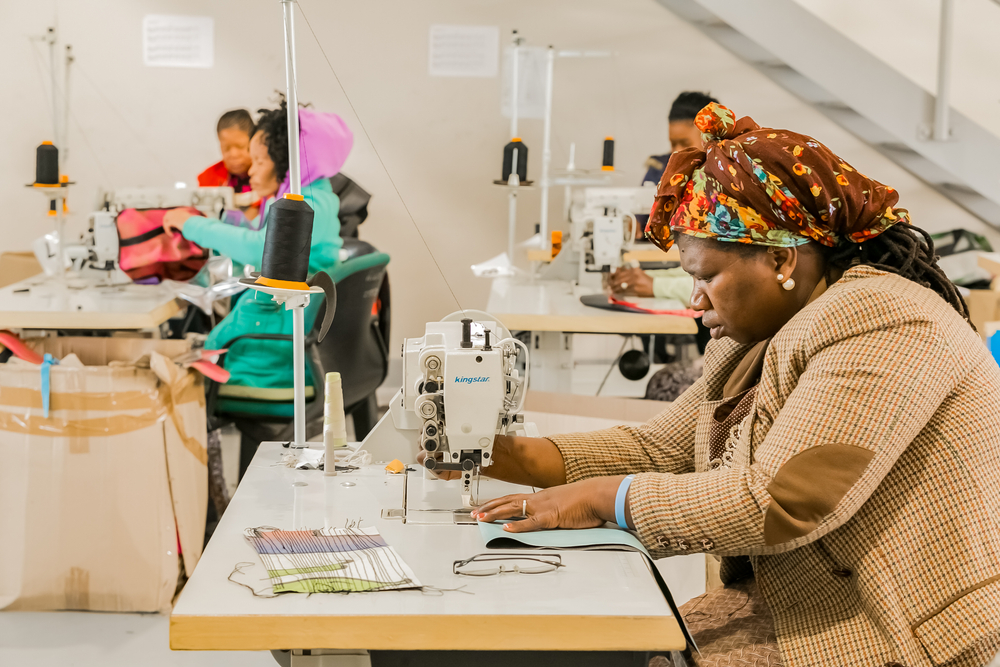Last week (7 October), UNCTAD’s Creative Economy Outlook 2022 report was tabled at the 3rd World Congress on Creative Economy in Bali.
It gives an update on the state of the creative economy and international trade in creative goods and services across its 195 member countries, which includes Australia and many of our regional neighbours.
‘Creative industries’ has become a buzz phrase in Australia in recent years, and a focus of governments when glancing towards the Arts. There is a lot going on in this space; but there also is a lot of confusion. Looking outside our own conversations and hype around the topic (often politically toned) may be helpful.
2021 was the UN International Year for Creative Industries, and put the creative economy front and centre at a time when creative solutions were being sought to overcome global challenges of the pandemic.
UNCTAD Secretary-General Rebeca Grynspan said: ‘The report is published at a time when the global community faces some of the most significant challenges in decades: the COVID-19 pandemic, looming climate change and environmental crisis, geopolitical tensions and a major cost-of-living crisis. Despite these challenges, the creative economy remains a critical sector for sustainable development.’
Many of us missed that moment of focus in 2021, thanks to the timeless blur of COVID-19. But as we anticipate the forming of a National Cultural Policy here in Australia, this global report, which positions the role of creative industries and its value to trade and national economies, is a timely one.
While some reports of this scale are like eating chips without a beer, they can offer an overview that serves as a good pulse-check and help us get a sense where our own activities fall regionally and internationally.
Creative industries – is it hype or global reality?
UNCTAD is the UN’s leading institution dealing with trade and development. This is its third report tabled on this focus area.
The difference between a creative good and a creative service, a creative industry and a creative economy, is, well … obviously confusing.
UNCTAD describes creative industries as, ‘cycles of creating, producing and distributing goods and services that use creativity and intellectual capital as primary inputs. They comprise a set of knowledge-based activities that produce tangible goods and intangible intellectual or artistic services with creative content, economic value and market objectives.
‘Advertising, architecture, arts and crafts, design, fashion, film, video, photography, music, performing arts, publishing, electronic publishing, research and development, software, computer games, and television and radio are a part of the lifeblood of the creative economy.’
To view UNCTAD’s list of 197 creative goods identified.
The key point made across the report, is that creative industries have the capacity to raise the revenue of nations – and the numbers present a strong case – but a lack of unified definitions and reporting continues to keep it a muddy discussion.
What kind of weight are we talking about?
The latest available data shows that in 2020, the cultural sector accounted for 3.1% of global gross domestic product (GDP).
UNCTAD estimated that creative goods and services represented 3% of total merchandise exports and 21% of total service exports globally.
In addition, cultural and creative industries provided 6.2% of all employment globally, generated nearly 50 million jobs worldwide, and employed more young people (15–29 year-olds) than other sectors.
In dollar terms, global exports of creative goods increased from US$419m in 2010 to US$524m in 2020, while world exports of creative services increased from US$487b to almost US$1.1 trillion during the same period.
Design goods – such as interior, fashion, jewellery, and toys– dominated trade in creative goods based on the current UNCTAD product composition, and made up almost two-thirds of all exports in 2020.
Little wonder then, that governments are using the framing of creative industries to platform their policies for arts and culture more generally.
But the report also warns, ‘there is a significant creative trade data gap between developed and developing countries’, and that ‘more data and innovative and multidisciplinary policy responses are needed to enhance the development impacts of the creative sector.’
Being a big country, with regional and remote access also causing challenges for inclusive policy, Australia is in line with some of the report’s findings.
Impact of COVID-19 on Creative Industries
The report confirms that creative goods exports were hit hard by the COVID-19 pandemic and lockdowns worldwide.
Creative goods exports were down by 12.5% in 2020, while exports of all [other] goods fell by only 7.2%. However, the report states that ‘preliminary data show that creative goods exports began to recover in 2021 and surpassed 2019 levels.’
The creative economy is one of the world’s fastest-growing sectors.
UNCTAD 2022 Creative Economies Report
Creative services proved more resilient than other services sectors during the COVID-19 pandemic. Exports of creative services fell by only 1.8% in 2020, while exports of all services fell by 20%.
Nevertheless, the COVID-19 pandemic had a devastating impact on certain creative industries and deepened their pre-existing vulnerabilities.
The reports indicates that during this period, as many as 10m jobs disappeared from the cultural and creative sectors, which contracted by US$750b globally in 2020.
Among the most vulnerable sectors globally, were the performing arts, visual arts, and the heritage sector, due to the high proportion of freelancers, and increased use of short-term contracts.
‘This can be due to the lack of physical exchanges on the global art market, an important distribution channel for visual arts, and increasing digitization in the audio-visual and publishing sector. Preliminary data show that exports of creative goods began to recover in late 2021.
‘Furthermore, due to a dramatic fall in global trade in travel services, the share of creative services further increased to 21.4 per cent in 2020. This may last if changed consumer behaviour and business operating habits caused by the COVID-19 pandemic stay permanent.’
While all of this is not news to Australian creatives, it is comforting to know that the pressures we have felt over the past two years were not ours alone.
Digging deeper into the Creative Economy Outlook report
Where this report gets interesting is around the topic of disparities and, while they don’t use the word ‘disadvantage’, the impediments faced by remote and underprivileged creative communities.
The report recognises that: ‘These industries create employment and income, promote innovation, and contribute to societies’ well-being,’ adding ‘developing countries are underrepresented and face hurdles in exporting these services.’
One of the big reasons behind this has been due to technological developments influencing creative economies, and the inconsistiences of access and education.
In a nutshell:
- Developing economies export more creative goods than developed ones.
- Developed economies export significantly more creative services than developing ones, accounting for 82.3% of all creative services exports in 2020. This is largely due to the lack of fundamental skills and infrastructure around digital technologies.
The report makes the point: ‘Due to technological development, the composition of creative goods exports changed significantly over the past two decades. The exports of CDs, DVDs, tapes, printed materials decreased, while the exports of recorded media and video games surged.
‘Design products dominate trade in creative goods. In 2020, design goods accounted for 62.9% of total creative goods exports, followed by new media products (13.4%), art crafts (8%), visual arts (6.2%), publishing (5.4%), audio-visuals (3.1%), and performing arts (1%). Among design goods, the main exported products are interior design products (20.1% of total creative exports), fashion (15.9%), jewellery (15.3), and toys (11.4%).’

Tech is changing creative industries
The use of 4.0 technologies has opened up new opportunities for the creative economy – from producing to distributing, and consuming creative goods and services. A big part of this has been e-commerce and streaming.
The report reels off the examples. Online platforms using artificial intelligence to personalise music and film preferences. Additive manufacturing, or 3D printing, being used to produce crafts. Augmented reality allowing for fashion shows featuring virtual models. Blockchain technology (i.e., non-fungible tokens) that can help certify the originality and ownership of unique artworks. Drone technology is significantly impacting media production, including advertising, broadcast and photojournalism, television, and filmmaking. Virtual reality can promote an immersive experience in computer games and performing arts.
It says that the recent pandemic accelerated the shift towards e-commerce and digital platforms, and while it provided a new spike, ‘it is still to be seen if the new consumer behaviours and business operating habits become permanent.’
However, the International Data Corporation (IDC) estimates that 65% of the world’s GDP will be digitised by 2022. But therein lies problems. The report further quotes the International Telecommunication Union, which estimates that as of the end of 2021, over a third of the world’s population, 2.9 billion people, do not use the Internet. The majority of them are women and girls.
In addition, only 39% of rural households [globally] have access to the Internet. This gap mainly affects the creative economy’s ability to be genuinely inclusive.
This was a huge focus of the report. It states: ‘Human skills are crucial in pursuing the digital transformation of the creative economy, and requires investment in the education system, including schools, universities, colleges, and training providers.’
New and emerging technologies are fundamentally changing some creative industries. Developing countries must catch up by providing adequate digital infrastructure and a regulatory environment.
UNCTAD Report, 2022
UNCTAD calls for multidisciplinary policy responses in education, digital infrastructure and legal frameworks related to the creative economy, such as intellectual property rights. This is one of the key recommendations of the tabled report.

Challenges to measuring the creative economy
Recognising that creativity is an intangible, the report makes note of a lack of harmonised definitions and methodologies, and lack of data, among the key challenges to measuring the creative economy.
‘Developing countries face challenges in quantifying creative services. They often lack appropriate statistical systems, adequate institutional arrangements, financial resources, IT infrastructure and trained experts. Even if data existed, processing, formatting and publishing them may be challenging.’
This data void, it is suspected, is leading to some creative industries and activities being overlooked by analysis, policy design and development.
This is the main recommendation and action to come out of this report. Moving forward, UNCTAD is currently involved in two UNESCO groups to facilitate further discussions on defining and measuring the creative economy more evenly.
This report is UNCTAD’s third Creative Economy Outlook. Read the report Overview in full.





